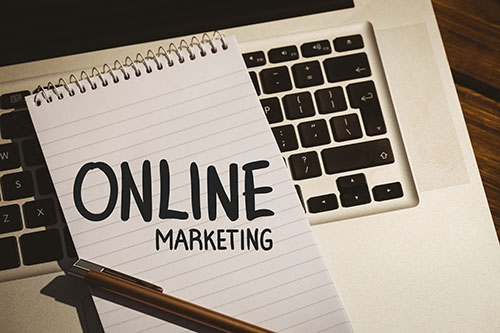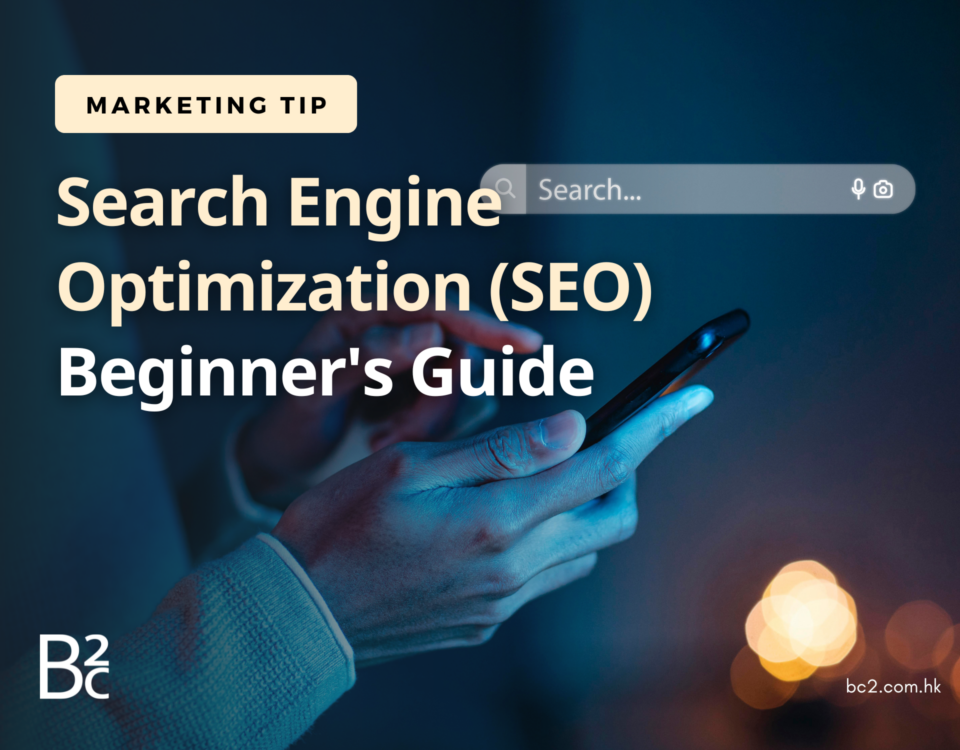


Beginner’s Guide to Starting an Online Store
October 17, 2023


Starting from Scratch: How to Successfully Enter the E-commerce Industry – Part 1
November 13, 2023Traditional Marketing vs Digital Marketing: Which one is better?
Table of Contents
There are various ways to capture the audience’s attention. Marketing is one of the fundamental aspects of business because it helps attract people’s interest. There are two marketing methods: traditional marketing, a classic approach, and digital marketing, a modern method. Traditional marketing has a long history, while digital marketing has only gained prominence in recent years. They each have their own advantages and disadvantages, making the choice between them dependent on individual preferences and business needs.
Traditional marketing and digital marketing differ significantly in many aspects, even though they share some similarities. They both exist in their own unique ways.
Comparison | Traditional Marketing | Digital Marketing |
Definition | This is a marketing method that utilizes media such as TV, magazines, and other outlets to promote a company’s services and products. | This is a marketing method that uses the internet and social media to promote a company’s products and services, known as digital marketing. |
Interactivity | Low | Relatively high |
Conversion | Slow | Extremely fast |
Return on Investment | Difficult to measure | Easy to measure |
Efficiency | Costly and less efficient | Cost-effective and highly efficient |
Targeting | Standard | Customized |
Tracking Performance | Impossible | Possible |
Audience Reach | Local | Global |
Adjustment | Once ads are displayed, adjustments are challenging | Adjustments can be made at any time |
Results | Display is relatively slow | Display is very fast, even immediate |
Communication | Typically one-way communication | Generally two-way communication |
Interruption | Not easy to skip | Can be skipped |
What Is Traditional Marketing?
Traditional marketing encompasses methods that can be used in a pre-internet era. These time-tested methods, although less prevalent today, still offer unique advantages.
Traditional marketing methods include:
- Direct mail postcards, coupons, and information-packed packaging
- Television or radio
- Newspaper or magazine advertisements
- Billboards or flyers
- Telemarketing calls or text messages
We encounter these advertisements daily, whether it’s through radio programs or roadside billboards. They’ve become an integral part of our everyday lives.

Why Choose Traditional Marketing?
On the other hand, digital marketing leverages the internet and online platforms to promote products and services. With the ubiquity of the internet and mobile devices, digital marketing has experienced rapid growth in recent years. It allows for targeted advertising, real-time data analysis, and the ability to reach a global audience. It provides multiple channels, such as social media marketing, search engine optimization (SEO), email marketing, and content marketing, making it a versatile and dynamic approach.
In our daily lives, we encounter numerous advertisements on television, in newspapers, or on the radio when we start our day. When we go out, we see marketing ads on flyers on the streets. We also notice large banners for various movie advertisements, which are also a form of marketing. They help movie production companies attract the attention of passersby. As a result, advertisements and banners have permeated various aspects of our daily life.
Language may vary by country or region. For example, in Hong Kong, advertisements may be presented in both Chinese and English. This is how traditional marketing operates. Its primary goal is to capture people’s attention in various ways without using the internet. Traditional marketing often takes into account language and cultural factors specific to certain regions or cultures to ensure that advertisements effectively convey messages and resonate with the audience. That’s why you may see advertisements in different languages in different regions to reach diverse audiences.
For many businesses, traditional marketing strategies may be more effective based on the type of company they have. When choosing between traditional and digital marketing, their target audience may prefer traditional marketing.
This is an important perspective. Different businesses and industries typically consider the preferences and behaviors of their target audience when choosing marketing strategies. Some target audiences may lean towards traditional media, such as newspapers or television, while others may prefer searching for information online or engaging on social media. Therefore, choosing a strategy that suits the target audience is crucial. Sometimes, using a mix of traditional and digital marketing strategies to maximize coverage of various audiences may be the wisest choice.
- Traditional marketing is a very effective way to reach an older demographic. Many reports and surveys indicate that people over 50 spend twice as much time watching television and reading newspapers compared to those in their 20s and 30s. This suggests that traditional media remains an important source of information and entertainment for older individuals.
- For those looking to establish or grow a business or company in the local market, traditional marketing is a very useful marketing approach. Small businesses can often better utilize flyers and roadside billboards to capture the attention of local residents.
- One significant advantage of traditional advertisements is that they can be repeatedly aired. In contrast, in digital marketing, people can easily skip them.
What Is Digital Marketing?
Digital marketing strategies are rapidly changing due to evolving trends and new technologies. These strategies encompass methods that rely on the internet and smartphones. While they haven’t been around as long as traditional approaches, they certainly wield significant power.
Digital marketing methods include:
- Website content
- Email marketing
- Content marketing
- Social media posts
- Clickable advertisements
- Affiliate marketing
- Search Engine Optimization (SEO)
These strategies are incredibly popular today because consumers regularly use the internet and mobile devices. According to DataReportal, there are 4.95 billion active internet users and 4.62 billion active social media users worldwide. With such staggering numbers, online marketing and social media marketing are entirely justifiable.


Why Opt for Digital Marketing?
In our fast-evolving world, various cutting-edge technologies are constantly progressing, and digital marketing strategies are at the forefront of this innovation. Nowadays, individuals can carry out marketing efforts right from their homes using the internet and smartphones. These strategies don’t necessitate a physical presence, leading to cost savings in terms of transportation, inventory, and associated expenses.
With the widespread use of social media and the internet, these strategies are experiencing rapid global growth. According to data from DataReportal, there’s solid evidence that 4.62 billion people use social media, and a staggering 4.95 billion people are internet users in total.
Consequently, advertising on the internet makes far more sense compared to traditional forms of advertising in mediums such as television or magazines.
Given the ongoing technological developments, digital marketing methods and strategies will inevitably continue to evolve. There are countless ways to engage in this type of marketing. Since they are modern, it’s crucial to stay informed about current technology and advancements. Digital marketers employ the latest strategies and technologies.
Digital marketing offers a host of advantages over traditional marketing. Here are some of them:
- Tracking audience engagement and collecting their data for future use is relatively straightforward. This enhances your company’s website algorithms. You can easily gather information when someone uses your website, tracks you on social media, or reaches out with inquiries.
- Businesses can promote their services for free on many platforms. Sending and receiving emails can be done without any associated costs. However, in traditional strategies, printing and mailing individual postcards would involve significant expenses.
- Due to the broader reach of digital marketing, it helps businesses attract the attention of a global audience.
Forms of Digital Marketing
Here are some forms of digital marketing:
- Search Engine Optimization (SEO): Enhancing your website’s ranking on search engines like Google to attract visitors with potential interest.
- Content Marketing: Creating high-quality content such as blog posts, videos, and social media posts to engage and retain your audience and build brand reputation.
- Social Media Marketing: Establishing and managing your brand image on social media platforms and interacting with fans and followers.
- Email Marketing: Sending promotional and informational emails to keep customers engaged and loyal.
- Search Engine Marketing (SEM): Promoting your website on search engine results pages through paid advertising, like Google Ads.
- Website Optimization: Improving website performance, speed, and user experience to ensure visitors stay and convert into customers.
- Video Marketing: Creating and sharing video content, often on platforms like YouTube and social media, to attract an audience.
- Mobile App Marketing: Promoting and marketing mobile applications to drive downloads and increase engagement.
- Content Advertising: Embedding advertising content on websites and social media in a paid form to attract an audience.
- Social Media Advertising: Paying to promote content on social media platforms to increase brand awareness and sales.
- Influencer Marketing: Expanding brand exposure through collaborations and partnerships with other brands, bloggers, or online influencers.
Forms of Traditional Marketing
Here are some forms of traditional marketing:
- Advertising: This includes television ads, radio ads, newspaper ads, magazine ads, and broadcast advertising.
- Telemarketing: Selling to potential customers by directly calling them.
- Flyers and Print Materials: This encompasses direct mail flyers, brochures, pamphlets, promotional posters, and more.
- Event Marketing: Holding events or exhibitions in specific locations to promote products or services.
- Word-of-Mouth Marketing: Promoting products or services through customer recommendations and word of mouth.
- Outdoor Advertising: This involves billboards, vehicle ads, wall ads, and similar outdoor promotional methods.
- Promotions: This includes offering discounts, freebies, promotional codes, and other incentives to attract customers.
- Public Relations: Boosting brand awareness by organizing events, offering giveaways, sponsoring events, and more.
The Pros and Cons of Digital Marketing
Digital marketing strategies are constantly evolving with the emergence of new technologies and trends, such as voice search and the use of social media. These strategies encompass the most modern and up-to-date approaches. However, similar to traditional marketing, digital marketing excels in some areas and performs moderately in others.
Pros:
- Data and audience engagement can be tracked instantly. When someone clicks on your website link, reads an email, or follows you on social media, you can immediately gather this information. This data provides valuable insights, such as which type of content suits a specific audience, which media is most effective, and even the best time of day for interactions.
- Digital marketing strategies are significantly more cost-effective. Sending email campaigns, for instance, saves a substantial amount compared to printing individual postcards and paying for postage.
- Due to the extensive reach of digital marketing, it is highly effective for global or dispersed audiences.
Cons:
- Some internet users employ ad blockers, so they will never see pop-up ads or banner ads. In other cases, if users subscribe to premium services (such as Spotify or YouTube), ads may be skipped or removed.
- Because new technologies and trends frequently emerge, digital marketing strategies need constant evaluation and reassessment of their effectiveness. What works well one day may become irrelevant the next. However, this can be addressed by building a solid foundation of digital marketing knowledge.
The Pros and Cons of Traditional Marketing
When comparing traditional marketing and digital marketing, traditional methods are often seen as outdated or irrelevant. However, many of these strategies are still useful and effective today.
Depending on the business and target audience, traditional marketing methods can be a better choice.
To help determine if traditional marketing is suitable for your business, here are some advantages and disadvantages:
Pros:
- If you want to reach an older target audience, traditional marketing can be highly effective. Reports show that viewers aged 50 and above spend nearly twice as much time reading newspapers and watching TV as viewers aged 21 to 34.
- This marketing strategy is typically best for businesses looking to build a larger local audience. Small businesses may be better off competing for attention through billboards, flyers, and events rather than trying to compete with larger companies in the digital space.
- TV or radio ads play multiple times, reminding the audience to pay attention to the business, while digital marketing content may be skipped or blocked (for example, clicking ‘I don’t want to see this’ on social media ads or skipping ads before YouTube videos).
Cons:
- Even sending printed postcards to a local audience can be costly, and there’s no guarantee that the recipients will be interested in your business or the products/services you offer.
- Traditional marketing methods may take weeks or even months to yield results and data. Unless someone decides to follow up, you won’t know who has read your newspaper ad. Even with follow-up, without surveys, you won’t know if the ad was the reason for the follow-up.


Digital Marketing vs. Traditional Marketing: Significant Differences
In the field of marketing, two major types take the spotlight: digital marketing and traditional marketing. So, what distinguishes them? Digital marketing encompasses a variety of marketing forms conducted through digital channels, such as the internet, email, or mobile devices. It has gained increasing popularity in recent years, thanks to the widespread use of digital devices and the surge in online social networks. On the other hand, traditional marketing refers to an array of marketing practices carried out offline, including print advertising, television commercials, or radio ads. It continues to be a favored marketing approach, especially for larger corporations with ample resources.
So, which one is superior – Traditional Marketing or Digital Marketing
The answer is: it depends.
In most scenarios, digital marketing tends to be the preferred choice. If you aim to reach a specific audience, regardless of their location, digital marketing stands out as a solid option. It not only enables cost-effective targeting but also offers the advantage of swiftly gathering valuable audience insights, enhancing the efficiency of your marketing campaigns.
Nevertheless, traditional marketing retains its relevance. If your goal is to connect with older or local audiences, traditional marketing methods can often be more productive and memorable compared to digital strategies. Despite their ‘old-school’ appearance, these methods persist for a reason – they deliver results!
When deciding which marketing strategy aligns best with your business, consider your audience, their information sources, and decision-making processes. When comparing traditional marketing and digital marketing, it’s not a matter of one being universally superior to the other; they cater to different needs. The crucial aspect is to thoroughly comprehend your business and your target audience to select the strategy that suits you best.”
Which Marketing Approach Should You Choose?
Digital marketing is often more cost-effective and allows for precise targeting, while traditional marketing can effectively reach larger audiences. When deciding which type of marketing to utilize, it’s essential to consider your budget and your target market.
At BC2, our team consists of members with extensive marketing experience, well-versed in various markets, and capable of providing timely and precise marketing strategy recommendations. In this digital age, digital marketing is fundamental and a key factor for success in business. BC2 offers a range of marketing solutions, including website development, content marketing, social media marketing, brand building, graphic design, and even mobile applications. We provide comprehensive digital marketing services all under one roof!
Get Your Quote
Share details about your business, and we’ll tailor a solution for you!



